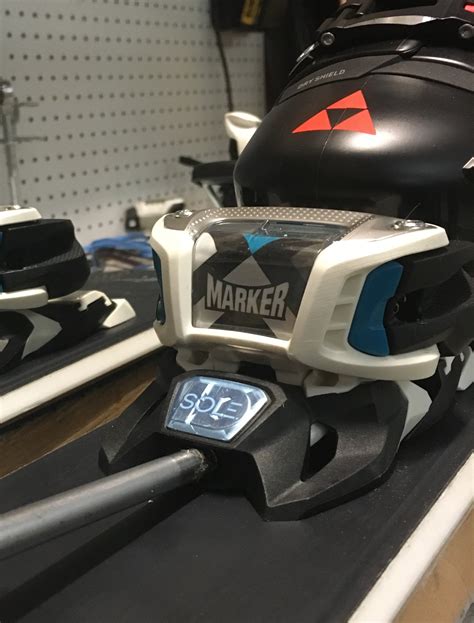Increase Your Skiing Confidence: Marker Binding Adjustment
Feeling confident on the slopes is crucial for an enjoyable and safe skiing experience. A significant factor contributing to this confidence is knowing your ski bindings are properly adjusted. Improperly adjusted Marker bindings can lead to premature release, increasing the risk of injury, or conversely, failure to release, potentially causing serious knee or leg injuries. This article will guide you through understanding and adjusting your Marker bindings, empowering you to confidently navigate any terrain. Note: This information is for guidance only. It's crucial to have your bindings professionally adjusted by a certified ski technician for optimal safety and performance.
Why are Marker Binding Adjustments so Important?
Marker bindings are renowned for their precise release characteristics, designed to protect your knees and legs in a fall. However, this precision requires careful adjustment based on your individual skiing characteristics – specifically your height, weight, boot sole length, and skiing ability. Incorrect settings can lead to:
- Premature Release: The binding releases unexpectedly during normal skiing, interrupting your run and potentially leading to falls.
- Late or No Release: The binding fails to release during a fall, potentially causing serious knee or leg injuries.
Getting the adjustment right balances safety and performance. A correctly adjusted binding will release in a fall, minimizing injury risk, while remaining secure enough to provide confident control throughout your turns.
Understanding the Key Settings on Marker Bindings
Marker bindings typically have several key settings to adjust:
-
DIN Setting: This is the most crucial setting, determining the force required for the binding to release. It's expressed as a number (e.g., 4-10). A higher DIN setting requires more force to trigger release, suitable for more aggressive skiers. A lower DIN setting is appropriate for lighter skiers or beginners.
-
Z-Value (some models): This setting influences the binding’s release characteristics in the fore/aft direction. The Z-value needs to be matched with your boot sole length (measured from the back of the heel to the tip of the toe).
-
Height Adjustment (Some Models): This feature helps to fine-tune the binding's release characteristics and ensure they are aligned properly.
How to Determine Your Appropriate DIN Setting
Several factors influence your ideal DIN setting:
-
Weight: This is a primary factor. Heavier skiers will need a higher DIN setting.
-
Height: Taller skiers generally need a slightly higher DIN setting.
-
Skiing Ability: Aggressive skiers who ski at higher speeds and with more force require a higher DIN setting than recreational skiers. Beginners generally start with lower DIN settings.
-
Boot Sole Length: This measurement helps determine other settings like the Z-Value as discussed above.
It is strongly recommended that you consult a certified ski technician to determine your appropriate DIN setting. They will use a specialized tool to measure your boot sole length and weight to ensure a precise and safe adjustment. They'll also take into account your skiing level.
What if My Bindings Release Too Often?
If your Marker bindings are releasing too often, it's crucial to get them checked by a technician. It may indicate your DIN setting is too low. Increasing the DIN slightly may resolve the issue. However, never adjust your bindings yourself unless you have the necessary expertise. Incorrect adjustments can lead to much more serious consequences.
What if My Bindings Don't Release?
If your bindings fail to release during a fall, it's a serious concern indicating the DIN setting may be too high. Immediately consult a technician for adjustment. This situation significantly increases your risk of knee and leg injuries.
How Often Should I Get My Marker Bindings Checked?
It's recommended to have your Marker bindings checked by a certified technician annually, or after any significant impact or fall. Regular checks ensure your bindings are functioning correctly and adjusted appropriately for your skiing style and physical characteristics.
Maintaining Your Marker Bindings
While a technician handles the critical adjustments, you can maintain the cleanliness of your bindings by wiping them down after each ski trip to remove any snow, ice, or dirt. This helps prevent corrosion and ensures the smooth operation of all moving parts.
Remember, your safety on the slopes is paramount. Properly adjusted Marker bindings are a significant contributor to that safety. Don't hesitate to seek professional help; it's the best investment you can make for a confident and enjoyable skiing experience.

